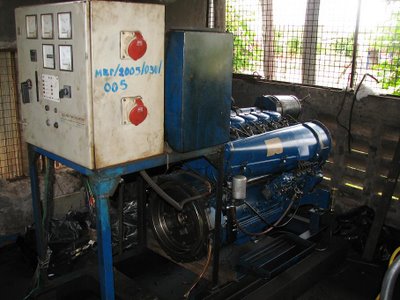I have access to the Internet again! I will be in Nairobi for a week to catch up with the ESD folks. So I will have access to the outside world for a brief period before going back to Mpeketoni. The Internet at the Posta in Mpeketoni went down about two days after I arrived and it hasn't been back up yet :( No worries, I have lots to tell you and will try to fill you in on what I've been up to over the next few days. I'll also try to catch up on old emails. Thanks for the notes! Here are a few more picutres from Mpeketoni. I also added the pictures to the "Karibu Mpeketoni" post. Shops in Mpeketoni town
Shops in Mpeketoni town

The head technician, Robert Nderitu, with the 150 kVA generator. It broke down about a week after I arrived and it has been chaos ever since!

The 57 kVA generatro has been down for repais for nearly a year, but it is almost ready to run again. With two out of three generators down, the technicians have been forced to "ration" power by cutting off power to certain areas during the day and night. It sure hasn't made the customers happy!


